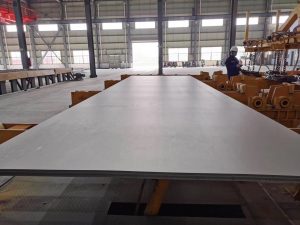ASTM A36 structural steel properties vs 4150
China United iron and steel limited produce ASTM A36 steel sheets and steel plates. Our main products are ASTM A36 steel plate,ASTM A36 structural steel properties ,ASTM A36 steel coil, ASTM A36 H Beam, ASTM A36 IPN, ASTM A36 UPN, ASTM A36 IPE, ASTM A36 round bar.
ASTM A36 structural steel properties and Mechanical Properties
| Mechanical Properties | Metric | Imperial |
| Tensile Strength, Ultimate | 400 – 550 MPa | 58000 – 79800 psi |
| Tensile Strength, Yield | 250 MPa | 36300 psi |
| Elongation at Break (in 200 mm) | 20.0 % | 20.0 % |
| Elongation at Break (in 50 mm) | 23.0 % | 23.0 % |
Content
It also needs to be noted that A36 has a decrease yield energy than C1018 which ends up in elevated bending capabilities over C1018 metal. Low carbon steels are classified by having lower than 0.3% carbon by weight. This allows A36 steel to be simply machined, welded, and formed, making it extremely useful as a common-purpose steel. The low carbon additionally prevents heat treatment from having much of an effect on A36 metal.
Since A36 doesn’t comprise large amounts of nickel or chromium, it does not have wonderful corrosion resistance. Steel is one of the most common metals used for structural functions. As there are lots of several types of steel out there, each with unique chemical and mechanical properties, you will need to know a few of the key attributes of A36 metal. A36 steel is the grade for one of the widespread forms of structural steels used at present. A36 grade metal is considered low-alloy; nevertheless, because the carbon can range up to 0.29 % at the most and delicate metal is anything under 0.25 p.c, A36 is considered the safest delicate steel.
ASTM A36 steel elongation
Customers usually ask us concerning the differences between sizzling rolled metal and cold rolled steel. There are some basic variations between these two forms of steel. The variations between hot rolled metal and cold rolled steel pertains to the way in which these metals are processed on the mill, and never the product specification or grade. ASTM A36 metal could be manufactured into numerous structural metal components, it is vastly utilized in many different industries for quite a lot of purposes, why choose ASTM A36?
Unlike most AISI grades corresponding to 1018, 1141, or 4140, American Society for Testing and Materials A36 metal is not designated by chemical composition. This signifies that while most grades will need to have added alloys that fit between certain percentages, A36 should meet particular mechanical standards. For instance, steel bars and plates should have a minimum yield energy of 36,000 pounds per square inch.

ASTM A36 structural steel properties Mechanical Properties
- Unlike most AISI grades similar to 1018, 1141, or 4140, American Society for Testing and Materials A36 metal just isn’t designated by chemical composition.
- For instance, steel bars and plates should have a minimum yield strength of 36,000 pounds per square inch.
- This means that while most grades should have added alloys that match between certain percentages, A36 must meet specific mechanical standards.
Heat evaluation shall be used to determine the required chemical composition for carbon, manganese, phosphorus, sulfur, silicon, and copper. Tensile energy, yield energy, and elongation shall be evaluated using rigidity check and must conform to the required tensile properties.
ASTM A36 angle is one of the most generally used carbon steels by the construction trade. It is a low-value material compared to specialty steels and displays the energy required for structural functions. Galvanizing the metal increases its resistance to corrosion. It’s energy, formability, and wonderful welding properties make it appropriate for a large variety of functions, together with welding, fabricating, and bending.
ASTM A36 steel forging
A36 metal usually has small quantities of other alloying components as nicely, together with manganese, sulfur, phosphorus, and silicon. These alloying elements are added to offer A36 steel its desired chemical and mechanical properties.
While there are some chemical composition necessities that A36 metal must adhere to, an important characteristic is the yield power requirement. The steels may be of the carbon, structural, stainless, ferritic, austenitic, and alloy types. covers carbon steel shapes, plates, and bars of structural quality for use in riveted, bolted, or welded development of bridges and buildings, and for common structural purposes.
